Vine leaves - part two - other things
- rosemarydearman1
- May 1, 2019
- 5 min read
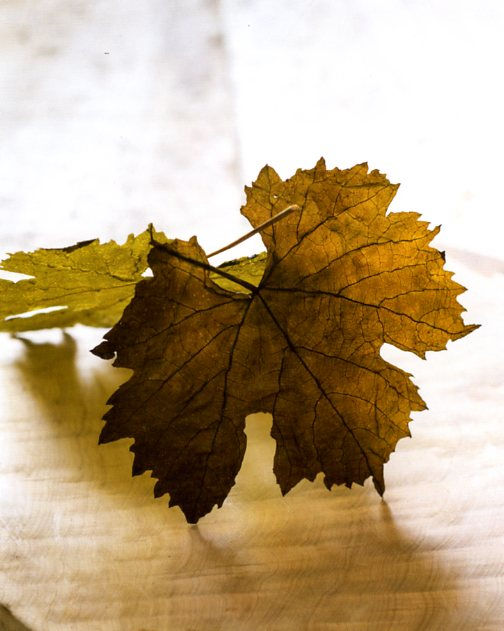
"A kind of edible wrapping paper."
Lucy Malouf
Yesterday's article was getting a bit long, so I decided to look at other things you could do with vine leaves separately. And, yes, they virtually all involve wrapping things in some way.
There seem to be three main categories - cheese, mushrooms and fish and then a few more 'oddities' that I have gleaned from here and there.
Of course people around the world wrap things in leaves of various kinds, although sometimes the wrapping itself is not intended to be eaten - like banana leaves. In the case of vine leaves - well sometimes you eat and sometimes you don't it seems to me. And the other thing to note is that the use of the vine leaf in food seems to be restricted to the Mediterranean and Middle East. Not much spread to elsewhere.
Whilst looking for inspiration on the net I found only a couple of recipes that used the leaves themselves as an ingredient - combined with spinach in a pie - Spinach and grape leaf pie, as an ingredient in a salad, also as an ingredient in a salsa. Otherwise we are really back to the edible wrapping concept.
Cheese

In her beautiful book Harvest, in the Summer section, Maggie Beer has a recipe for Vine leaves grilled with goat's cheese and walnuts, which she maintains is wonderful for using up tired bits of goat's cheese. And I'm guessing you could do the same with any other kind of soft cheese. Basically you roast the walnuts and chop them and mix them with the cheese and some parsley. Blanch the vine leaves in verjuice, wrap the cheese mixture in the leaves and bake in a hot oven for 4 minutes. Serve with a vinaigrette drizzled over and made with the leftover verjuice and some walnut oil. I couldn't find this one on the net.
Others wrap blocks of cheese such as feta, haloumi and kefalatiri in vine leaves and barbecue or grill it. Or even fry it. As you can see from the picture you can add seasonings and flavourings to the cheese at will. There also always seems to be some olive oil in there somewhere. And really there is no reason not to experiment with other cheeses too - Spanish ones seem to be the flavour of the month.
Yoghurt isn't quite cheese, but it almost is, and there are a couple of recipes out there for pies made with yoghurt. I guess you could do it with ricotta too because it's a bit like baked ricotta.
The one on the left is from Yotam Ottolenghi and is called Vine leaf, herb and yoghurt pie. The other one is from Gourmet Traveller and is called Yoghurt baked in vine leaves with dill and parsley - looks a bit more like a terrine, but it's very similar to Ottolenghi's. So one is left wondering whether the chefs poach from each other or whether this is a traditional dish that they have simultaneously picked up for reworking.
Anyway - that's cheese. Improvise around those ideas.
Mushrooms
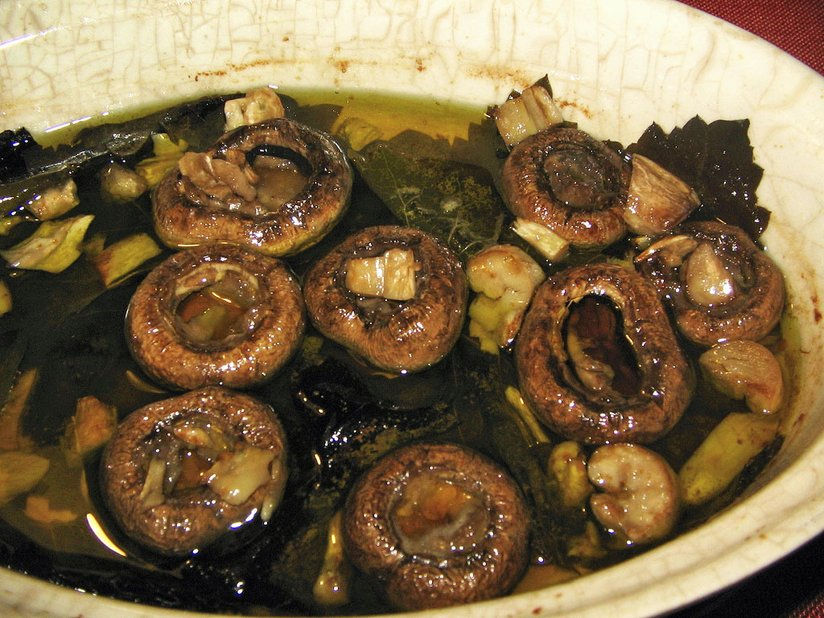
Vine leaves must have a special affinity for mushrooms because there are quite a few recipes for mushrooms baked with vine leaves - mostly not stuffed individual parcels, more the pie concept. And I think a lot of chefs acknowledge Elizabeth David here, who published a recipe that she herself had got from a little-known cookbook. The recipe is over 100 years old and I found several versions of it. The one from an Israeli website called From the Grapevine is different from most of the others, and Elizabeth David herself, in that she does not put vine leaves over the top of the mushrooms. But I have to say it looks pretty nice. it seems to be a good way to make ordinary cultivated mushrooms taste good.
Greg Malouf has a rather more complicated but very delicious sounding recipe called Mushroom-stuffed vine leaves with herbs - a different concept in that we are back to little parcels and he adds more flavour with porcini mushrooms and herbs. Yum.
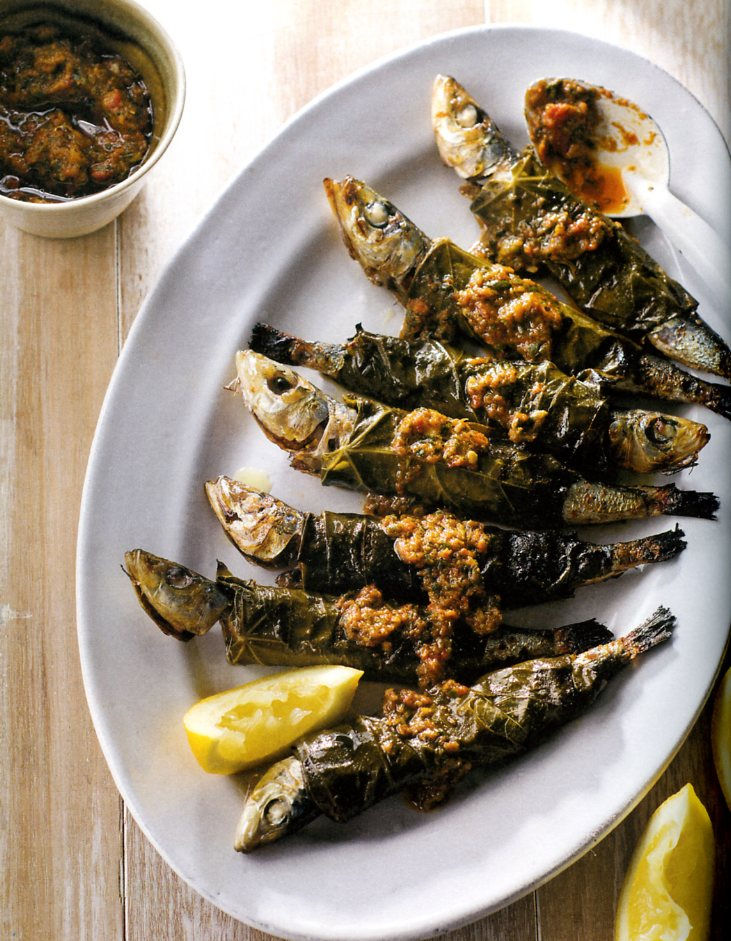
Fish
"Their chief attraction is the slightly tart, lemony flavour they impart, so they have a natural affinity with fish and poultry." Lucy Malouf
Mostly smallish fish like sardines, and garfish and red mullet. But Maggie Beer did it with yabbies too.
The concept here is to wrap the leaves around the fish and barbecue or grill them or even fry them. Some talk about eating the leaves. Some talk about the leaves coming off with the skin, leaving the juicy flesh underneath. Virtually all the recipes I found were really simple - any complication came with what you served with it - like the harissa in the version above from Falafel for Breakfast. Very simple - just rub the fish with harissa, wrap in vine leaves and cook, topping with more harissa to serve.
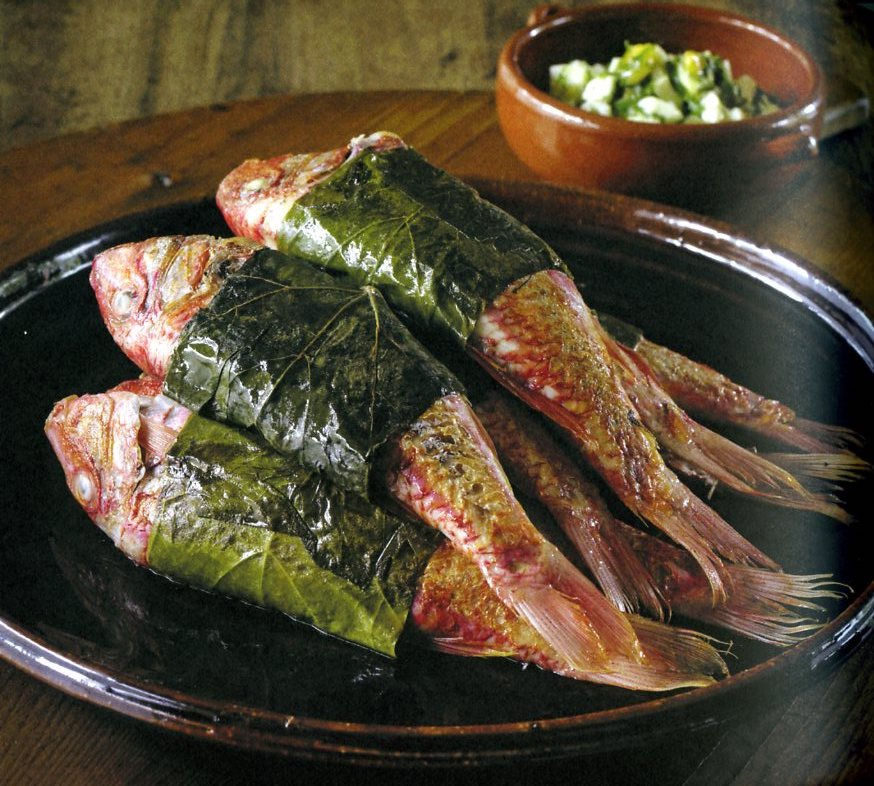
Greg Malouf's beautiful looking red mullet is even simpler, just wrap and cook. With him it's all in the relish he serves with it.
Maggie Beer is a bit more fussy - she spreads a paste made from herby, spicy things on the vine leaves before wrapping the fish, and I guess you could also stuff the fish with something. But really when it comes to fish it is really, really simple.

These are the three main ways that vine leaves are used in cooking, but I will leave you with just two more recipes and one out there suggestion - which is to use the tendrils from the young vines in salads.
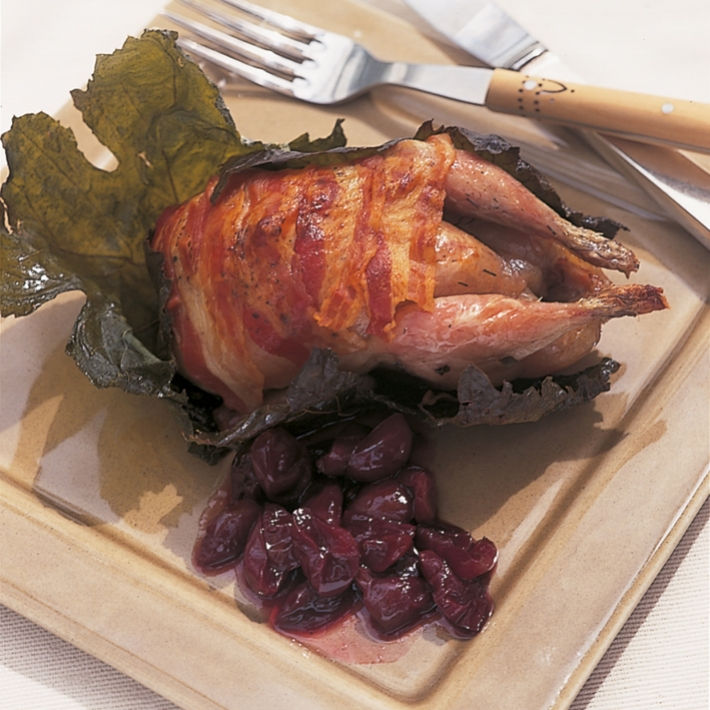
Delia has a recipe for Quail wrapped in pancetta and vine leaves, though I have to say that the thing that really attracted me about this recipe was the grape confit that she served it with.
And finally, I will give the last word to Maggie Beer who dedicated a whole chapter to vine leaves in Harvest. Not that this recipe was in that book. It was for Figs stuffed in vine leaves. Now I'm not a fan of figs but I have to say that this looks really cute and would impress any of your foodie friends.
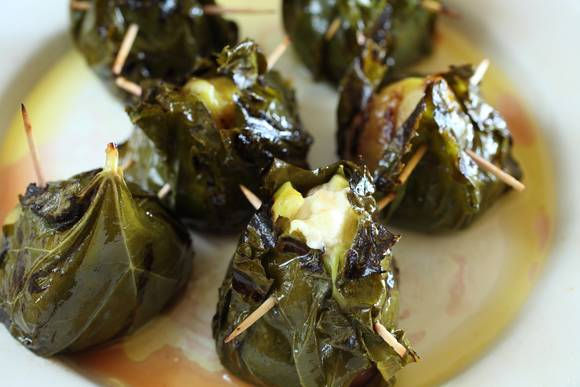
And the last final tiny thing. You can also use vine leaves as a garnish by dusting them with flour and deep frying until crisp.
As you will have gathered from today's post - and yesterday's too, my main sources for ideas here -not surprisingly - were Claudia Roden, Elizabeth David and Greg Malouf. Maggie Beer was an initial surprise, but then I realised that, of course, she is a massive fan of verjuice, which she sells, and that she is surrounded by vines in the Barossa, so I shouldn't be surprised at all. And indeed she got her verjuice in there.
Apologies - I guess these two posts have really been just lists of recipes, but it's a good example of how many different ways you can use just one thing. And even if you start with one recipe, nobody can resist fiddling with it, in however minor a way.
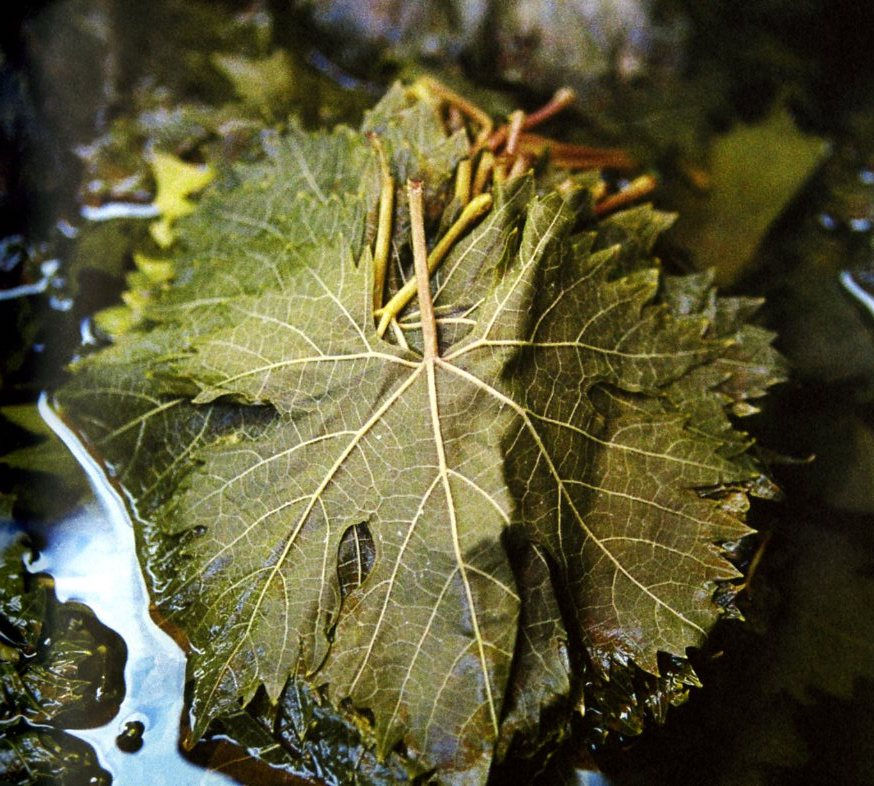
"Over the last few decades Australia has become one of the most significant wine-producing countries of the world, and a sadly neglected by-product of all this excellent industry is the vine leaf!" Lucy Malouf
















Comments